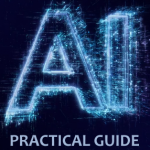Practical AI for Beginners: How to Start Learning and Applying AI
Artificial Intelligence (AI) is no longer a concept confined to science fiction. It’s a reality that’s reshaping our world, from how we work to how we live. As part of our AI Practical Guide objective, this blog post aims to guide beginners on how to start learning and applying AI. The site itself provides our readers the resources and information you need to further your AI journey. Whether you are a beginner or advanced user in the AI space you will find that the site is dedicated to show you the options that are out there so you can control your own process.
Understanding AI: The Basics
AI, or Artificial Intelligence, refers to the capability of a machine to imitate intelligent human behavior. It’s a broad field that includes various subfields such as Machine Learning, Deep Learning, and Natural Language Processing. The history of AI dates to the mid-20th century, and since then, it has evolved into a key component of modern technology. It really wasn’t until the launch of ChatGPT-3 in November of 2022 by OpenAI that the industry really exploded however. Now it seems like AI is everywhere and it is! Understanding the basics of AI, including its types and key principles, is the first step in your AI learning journey ad the sooner you begin the better.
Getting Started with AI: Tools and Resources
To start learning AI, you’ll need access to certain tools and resources. These include programming languages like Python, AI platforms like TensorFlow, and online resources for learning, such as our AI Practical Guide. Having a systematic approach to learning AI, including setting clear goals and following a structured learning path, can significantly enhance your learning experience.
There is a lot to learn and more and more tools and resources are coming out every day. It surely can be overwhelming but were here to cut down the noise and let you learn as we do. We are not experts either but documenting our journey as to help you along yours.
Learning AI: Step-by-Step Guide
If you’re interested in the development and programming of AI you will need to start a series of steps. First, you need to understand the basics, which include foundational mathematics and programming languages. Next, you’ll learn about AI algorithms and models, which are the building blocks of AI systems. Then, you’ll get hands-on practice with AI tools, working on projects that allow you to apply what you’ve learned. Finally, you’ll delve into more complex AI topics and work on advanced projects.
If you are looking for more practical hands-off approaches and not so concerned as to what is under the hood, we have that covered too. You will want to check out our AI applications section to discover how AI is changing your specific industry and how you can stay ahead of the game. For those of you looking for specific tools that are out there now check out the AI tools section where you can find the right tool for your specific needs.
Applying AI: Practical Applications
AI has practical applications in various fields, including healthcare, finance, legal, and education. For instance, AI is used in healthcare to predict diseases, examine scans for cancerous moles, and aid Doctor offices with appointments and follow-ups. In finance, AI is analyzing market trends, detecting fraud, and making credit decisions. In education AI is personalizing learning, allowing for project analysis and creating lesson plans. Every industry is finding innovative uses for AI and the speed in which they are developing is astounding. Understanding these applications can give you a clearer idea of how AI can be used in real-world scenarios.
Top FAQ
How can I learn AI by myself?
With the right resources and dedication, you can learn AI by yourself. Start with the basics, practice regularly, work on projects, and continuously update your knowledge.
What are the 4 key principles of AI?
The four key principles of AI are learning from experience, automating tasks, reasoning and problem-solving, and perception and understanding.
What are the 5 big ideas in AI?
The five big ideas in AI are perception, representation and reasoning, learning, natural interaction, and societal impact.
What should I study for AI?
To study AI, you should focus on mathematics, programming, machine learning, and AI algorithms and models.
Overcoming Challenges in Learning AI
Learning AI can be challenging, especially for beginners. You might face difficulties in understanding complex concepts or in applying what you have learned. However, with persistence, practice, and the right resources, you can overcome these challenges and successfully learn AI.
Conclusion
Learning AI is a journey that requires dedication and effort. But with the right approach and resources, it’s a journey that can be incredibly rewarding. We hope this AI Practical Guide helps you get started on your AI learning journey and encourages you to explore the fascinating world of AI.

